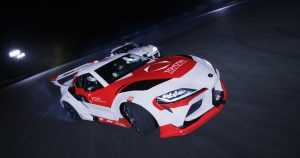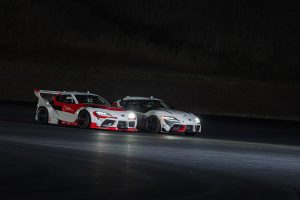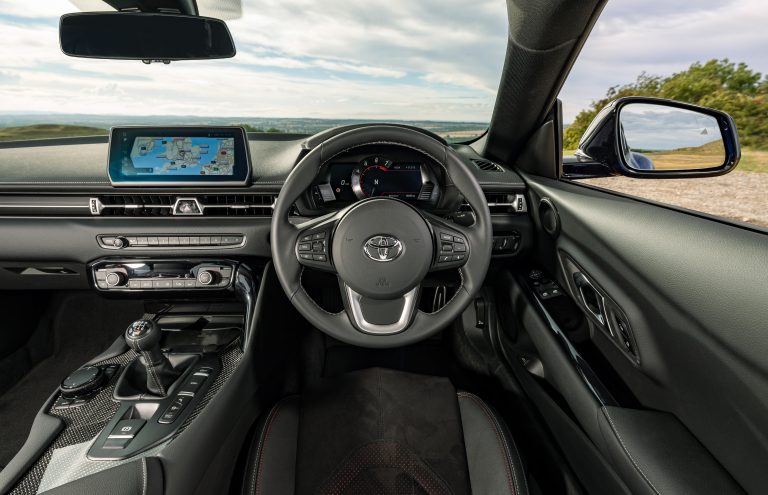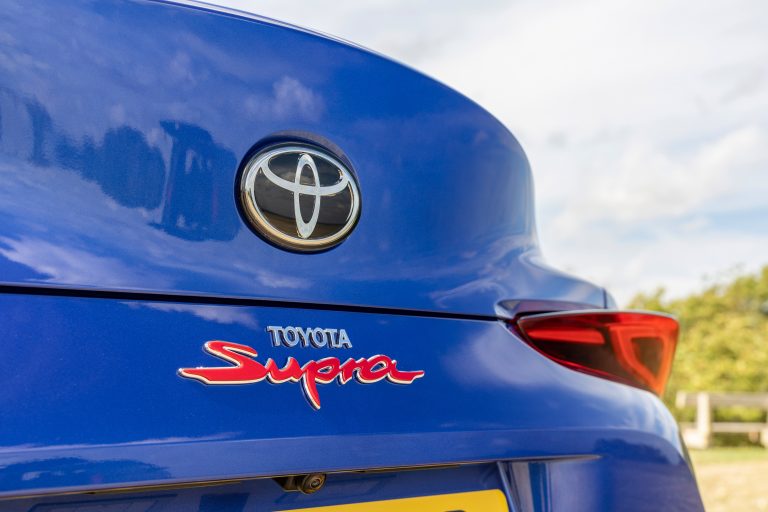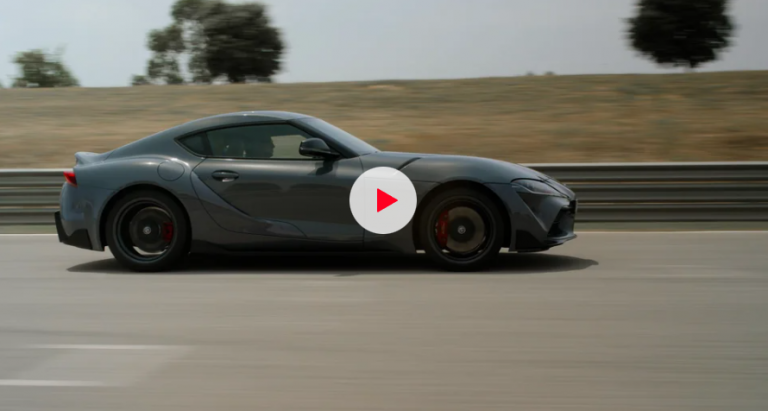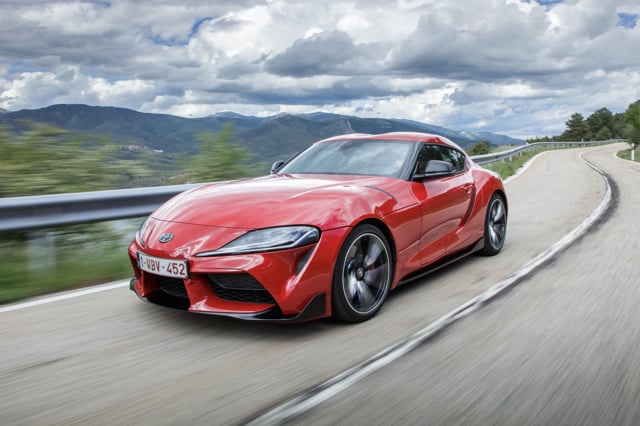Toyota Research Institute and Stanford Engineering achieve world’s first autonomous tandem drift sequence
Toyota Research Institute (TRI) and Stanford Engineering have achieved the world’s first autonomously drifting sequence featuring two cars in tandem following almost seven years of collaborative research to make driving safer.
The experiments automate a motorsport drifting manoeuvre, where a driver precisely controls a vehicle’s direction after breaking traction, by spinning the rear tyres – a skill transferable to recovering from a slide while driving on snow or ice. By adding a second car drifting in tandem, the teams were able to simulate more closely dynamic conditions where cars must respond quickly to other vehicles, pedestrians and cyclists.
“Our researchers came together with one goal in mind – how to make driving safer,” said Avinash Balachandran , Vice President of TRI’s Human Interactive Driving division. “Utilising the latest tools in AI, we can drift two cars in tandem autonomously. It is the most complex manoeuvre in motorsports, and reaching this milestone with autonomy means we can control cars dynamically at the extremes. This has far-reaching implications for building advanced safety systems into future automobiles.”
“The physics of drifting is actually similar to what a car might experience on snow or ice,” said Chris Gerdes, Professor of Mechanical Engineering and Co-director of the Center for Automotive Research at Stanford (CARS). “What we have learned from this autonomous drifting project has already led to new techniques for controlling automated vehicles safely on ice.”
In an autonomous tandem drifting sequence, two vehicles – a lead car and a following car – navigate a course, at times within inches of each other, while operating at the edge of control. The team used modern techniques to build the vehicle’s AI, including a neural network tyre model that allowed it to learn from experience, much like an expert driver.
“The track conditions can change dramatically over a few minutes when the sun goes down,” said Gerdes. “The AI we developed for this project learns from every trip we have taken to the track, to handle this variation.”
Car crashes result in about 1.35 million fatalities worldwide every year. Many of these incidents are due to a loss of vehicle control in sudden, dynamic situations. Autonomy holds tremendous promise for assisting drivers to react correctly.
“When your car begins to skid or slide, you rely solely on your driving skills to avoid colliding with another vehicle, tree, or obstacle. An average driver struggles to manage these extreme circumstances, and a split second can mean the difference between life and death,” added Balachandran. “This new technology can kick in precisely in time to safeguard a driver and manage a loss of control, just as an expert drifter would.”
“Doing what has never been done before truly shows what is possible,” added Gerdes.
“If we can do this, just imagine what we can do to make cars safer.”
Technical Details
The experiments were conducted at Thunderhill Raceway Park in Willows, California, using two modified GR Supra coupes. TRI developed the algorithms on the lead car, while Stanford engineers were responsible for those on the following car.
TRI focused on developing robust and stable control mechanisms so the lead car could make safe, repeatable runs. Stanford Engineering produced AI vehicle models and algorithms that enable the following car to adapt dynamically to the motion of the lead car, so that it can drift alongside without colliding with it.
GReddy and Toyota Racing Development (TRD) modified each car’s suspension, engine, transmission and safety features. The cars were built to the same specifications used in Formula Drift competitions to help teams collect data with expert drivers working in a controlled environment. Both cars are equipped with computers and sensors to control steering, throttle and brakes and monitor motion (position, velocity and rotation rate). Crucially they share a dedicated WiFi network that lets them communicate in real time, exchanging information such as their relative positions and planned trajectory.
To achieve autonomous tandem drifting, the vehicles must continually plan their steering, throttle and brake commands and the trajectory they intend to follow, using a technique called Nonlinear Model Predictive Control (NMPC). In NMPC, each vehicle starts with objectives, represented mathematically as rules or constraints that it must obey. The lead vehicle’s objective is to sustain a drift along a desired path while remaining subject to the laws of physics and hardware limits, such as the maximum steering angle. For the following vehicle, the objective is to drift alongside the lead vehicle while avoiding a collision.
Each vehicle then solves and re-solves an optimisation problem, up to 50 times per second, to decide which steering, throttle and brake commands best meet its objectives while responding to rapidly changing conditions. AI is leveraged to constantly train the neural network, using data from previous tests, so that the vehicles improve their performance with every trip to the track.
For more technical information, please visit TRI’s Tandem Drifting Medium blog.
About Toyota Research Institute
Toyota Research Institute (TRI) conducts research to amplify human ability, focusing on making our lives safer and more sustainable. Led by Dr. Gill Pratt, TRI’s team of researchers develops technologies to advance energy and materials, human-centred artificial intelligence, human interactive driving, and robotics. Established in 2016, TRI has offices in Los Altos, California, and Cambridge, Massachusetts. For more information about TRI, please visit http://tri.global.
ENDS


